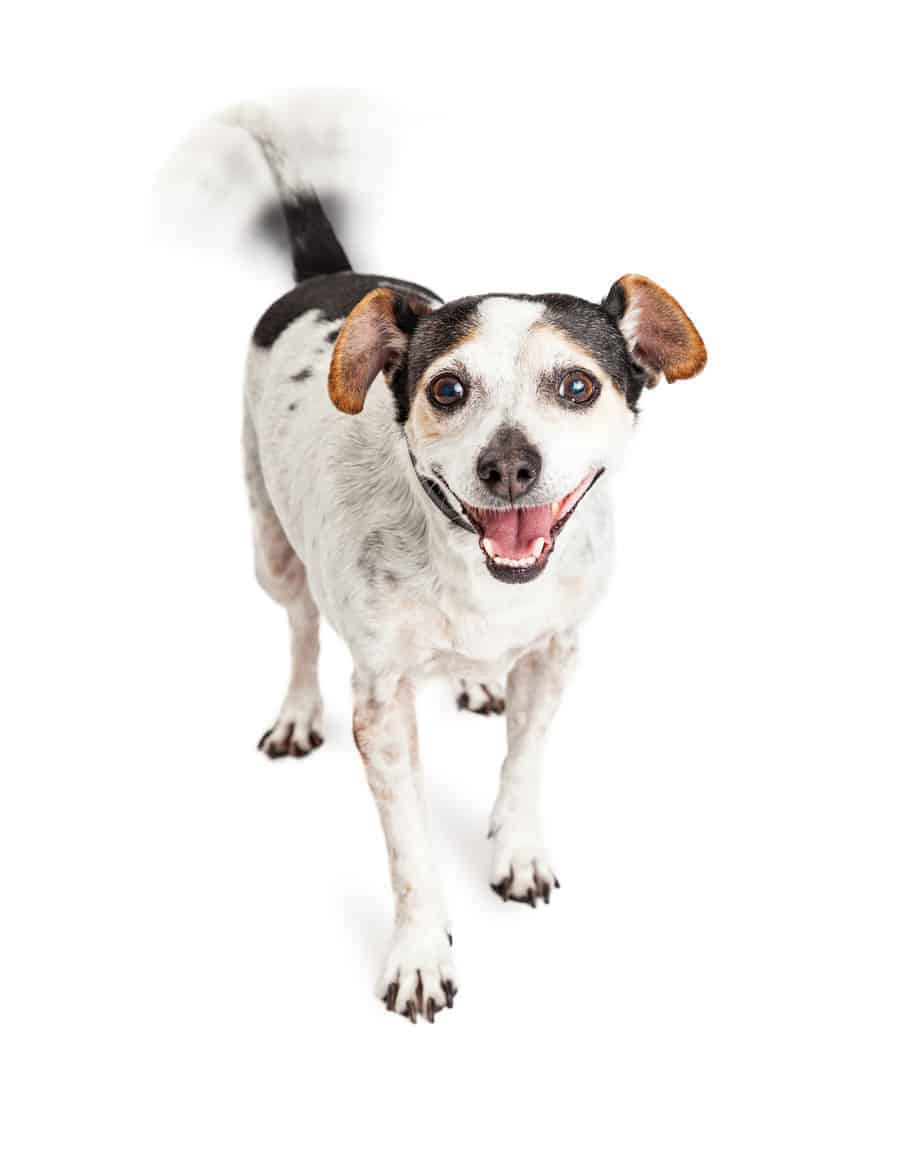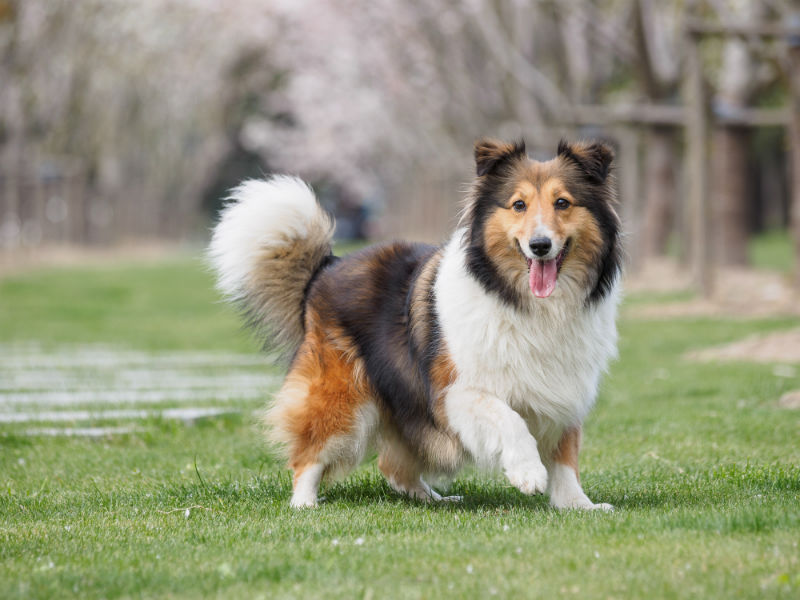
Many dogs will wag their tails from arousal or when performing predatory behaviors. Many dogs will wag their tails from arousal or when performing predatory behaviors.

Tail wagging reflects a dogs excitement with more vigorous wagging relating to greater excitement.
Is a dog happy when it wags its tail. If a dog is wagging its tail and the rest of its body seems relaxed or is moving along with the wagging you are probably dealing with a happy comfortable dog. Happy relaxed tail wagging is usually accompanied by a happy facial expression. A happy dog usually has bright eyes a relaxed open mouth and possibly a gentle pant.
The prevailing view is that they do so when they feel happy and friendly. Many do but dogs also wag their tails in other situations. So the answer to the title question is no.
Dogs wagging their tails are not always expressing friendliness or joy. Not by a long shot. Many dogs will wag their tails from arousal or when performing predatory behaviors.
If a dog is wagging its tail and the rest of its body seems relaxed or is moving along with the wagging you are probably dealing with a happy comfortable dog. Happy relaxed tail wagging is usually accompanied by a happy facial expression. A happy dog usually has bright eyes a relaxed open mouth and possibly a gentle pant.
Fast tail wagging with other happy signals usually means the dog. Maybe one of the most common misconceptions about dogs and their tails is that a wagging tail means a happy dog. This isnt always the case though.
Tail wags are a frequent cause of misunderstanding between dogs and humans says Dr. Carlo Siracusa head of the Animal Behavior Medicine Service at the University of Pennsylvania School of Veterinary Medicine. A dog holding its tail up is alert and curious.
A recent study found that the direction a dog is favoring when wagging his tail may be a mood indicator as well. A dog wagging his tail. If a dogs tail is wagging vigorously you know that Im gonna knock everything off the coffee table swish it is probably a good indication of happiness or at very least positive excitement of some kind.
When a dog is having a good dream it is probably happy. Naturally when a dog is happy it wags its tail. This only happens once your dog enters the REM cycle when it can dream.
Happy dreams could be something like. A memory of seeing you for the first time. They are chasing a tennis ball or frisbee.
The dog made a new friend. Now the natural assumption is that a dog wagging its tail is happy but that isnt necessarily true. As science has shown it really all depends on how fast the tail is moving and to which side it shows a bias.
It turns out that tail wags coincide with a whole range of emotions not just happiness and excitement. According to Lynn Buzhardt DVM a veterinary consultant for. Perhaps the most common misinterpretation of dogs is the myth that a dog wagging its tail is happy and friendly.
While some wags are indeed associated with happiness others can mean fear insecurity a social challenge or even a warning that if you approach you are apt to be bitten. A cute way our dogs tell us theyre happyor is it. Although looking at the way a dog is moving their tail can help you to understand how they are feeling its really important to also take note of what the rest of their body is doing along with their facial.
A tail held straight out means the dog is curious about something. Tail wagging reflects a dogs excitement with more vigorous wagging relating to greater excitement. By studying a group of 30 family pets and how their tails moved when confronted with various stimuli the researchers determined that generally when a dog wags its tail with a bias to the right side of its body its feeling positive.
A wag with a left bias they said indicates negative feelings. Not all tail wagging it seems means. When your cat thrashes their tail or is thumping it on the ground they are irritated annoyed or angry.
This tells you that something is bothering your cat. This is a distance-increasing behavior. In other words if you are petting your cat and they start thrashing their tail they are trying to.
Tail wagging stiffly. A dog who is excited may wag his tail stiffly while jumping spinning or sticking his rump in the air. His excitement may be from a positive source like an upcoming walk or a negative source like an intimidating stranger.
A tail held straight out indicates a dog who is attentive and alert or perhaps. A wagging tail doesnt cause physical harm. Unfortunately far too often people mistakenly pay more attention to the tail action than to the front end of the dog specifically the mouth displaying a full set of sharp teeth cautions Alice Moon-Fanelli PhD a certified applied animal behaviorist in private practice in Eastford CT.
If a dog is friendly or happy he often wags his tail particularly in a circular motion either running towards you or standing in one place. Popularly known as the helicopter wag this wag is created by the tail frequently moving in a circular motion.